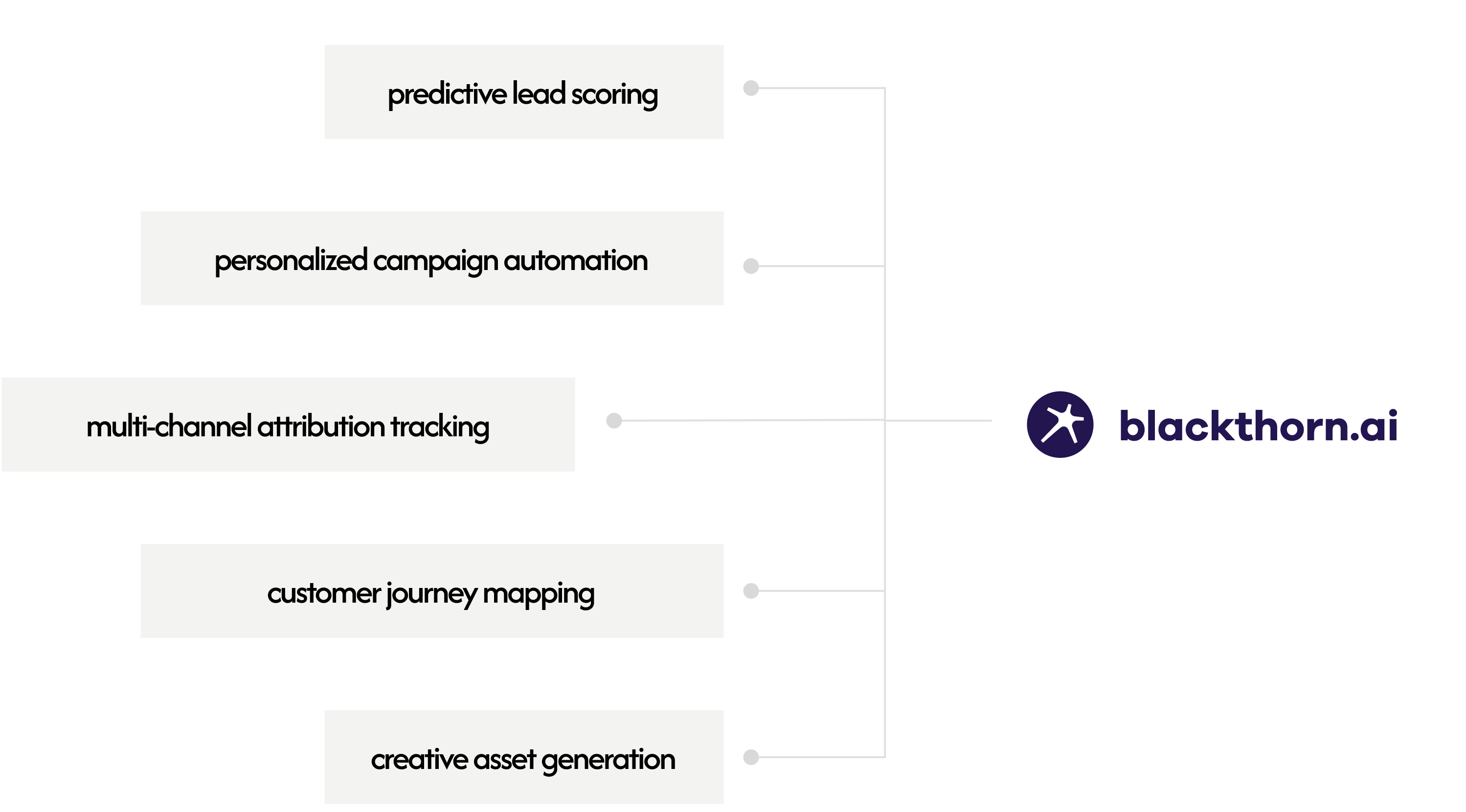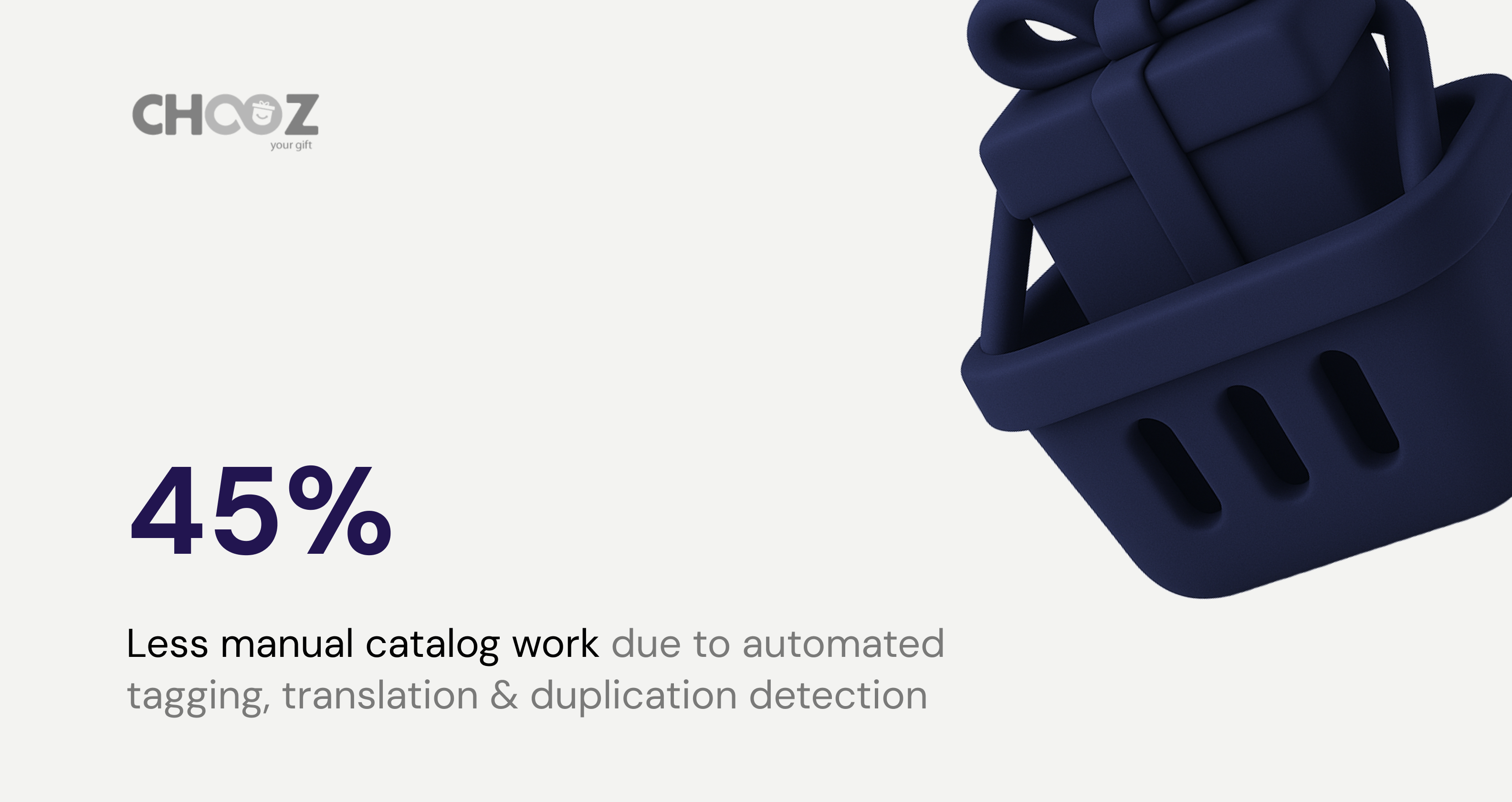AI-Powered Software Development for Marketing Teams & Agencies
We build scalable, data-driven marketing platforms — from AI-powered customer segmentation and campaign automation to analytics dashboards that drive measurable ROI.
Book MeetingWe build scalable, data-driven marketing platforms — from AI-powered customer segmentation and campaign automation to analytics dashboards that drive measurable ROI.
Book MeetingTrusted by Industry Leaders:
Our mission ![]()
![]()
![]() is to empower marketing teams and agencies with AI-powered software
is to empower marketing teams and agencies with AI-powered software ![]() that automates campaigns, maximizes ROI, and unlocks deeper customer insights.
that automates campaigns, maximizes ROI, and unlocks deeper customer insights.
Blackthorn AI is a leading partner among marketing software companies.
Book a Meeting70%+
Reduction in Manual Workload Across Campaign OpsAI agents replace manual segmentation, lead scoring, ad setup, and email workflows — reducing human involvement and increasing speed.
50+
Marketing & Sales Systems Delivered for B2B & B2C
Including ad automation tools, analytics dashboards, outreach assistants, and campaign engines built for scale.
24/7
Lead Capture & Nurture Without Human SupervisionAI chatbots, forms, and drip sequences work around the clock — capturing leads, answering questions, and moving contacts through the funnel.
3x
More Leads from Same Budget via Predictive TargetingCampaigns powered by AI-optimized lookalike audiences, real-time feedback loops, and channel-specific tuning deliver higher ROI per $ spent.
Our tools support AI-driven marketing performance, including:

Why
Marketing Companies Choose Blackthorn AI
Outcome-Focused Partnership
-
Maximizing marketing ROI
We build platforms that turn raw data into smarter campaigns, improving CAC, ROAS, and overall conversion rates.
-
Built for growth at scale
From SMBs to enterprises, our solutions are designed to scale across markets, channels, and campaigns.
Deep Marketing Expertise
-
Domain experts
Unlike generic IT vendors, we understand the realities of marketing funnels, customer acquisition, and retention strategies.
-
Faster results, fewer blockers
We cut down manual campaign work, unify data, and automate reporting — so teams can focus on strategy, not spreadsheets.
Certified & Compliant Engineering
-
Credentialed, proven engineers
Our team includes certified cloud and martech engineers with experience integrating platforms like HubSpot, Salesforce, Google Ads, and Meta Ads.
-
Security and compliance by design
We ensure compliance with GDPR, CCPA, and ad network policies, protecting your campaigns and customer data.
Lean & Transparent Operations
-
Agile, marketing-ready delivery
We deliver fast iterations tailored for marketing cycles — from MVPs to full-scale CDPs — reducing time-to-value.
-
Clear communication, zero fluff
Work directly with experts who understand your KPIs (CAC, ROAS, CLV). No vague metrics, just accountable results.
Straight to Business?
Blackthorn AI empowers organisations to solve complex, cross-industry challenges with intelligent, scalable solutions
Book a Meeting
